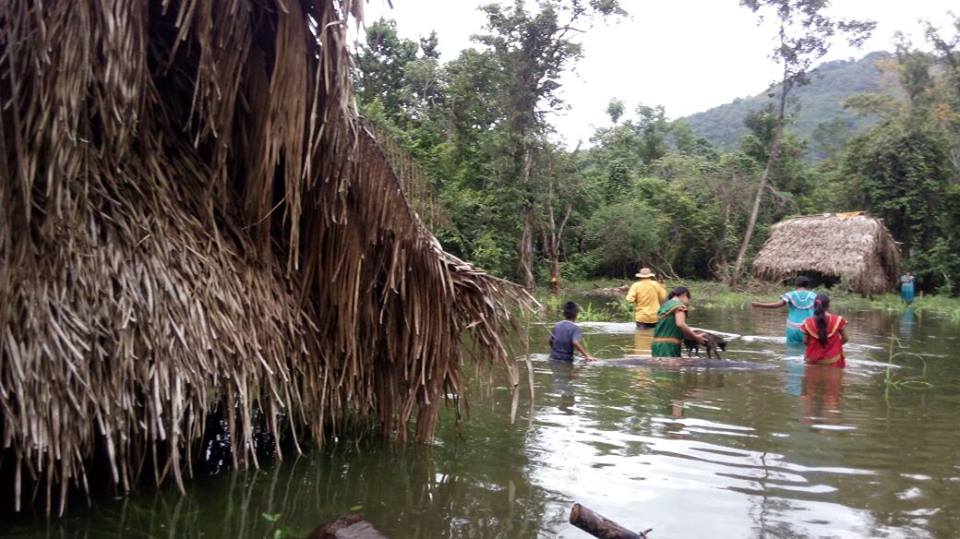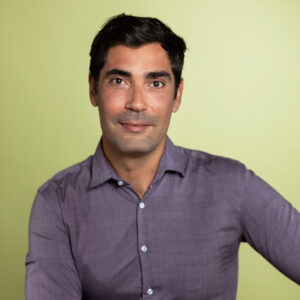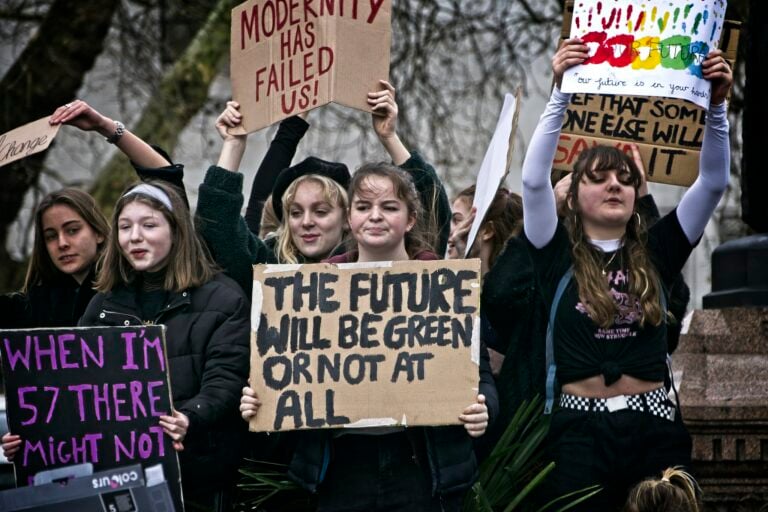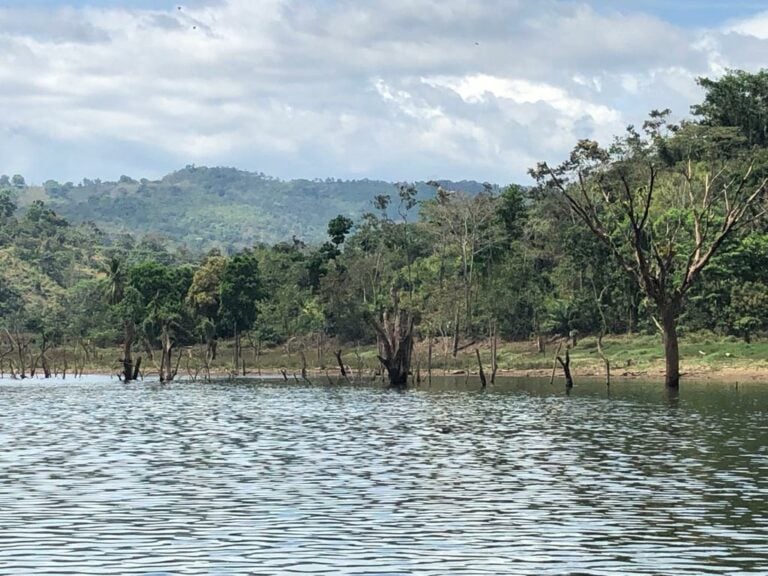
Five years of Barro Blanco
In April 2021, the Dutch development bank FMO announced that it is no longer involved in the Barro Blanco project, a controversial dam in Panama. GENISA, the Panamanian company that built the dam, unexpectedly paid off the multi-million dollar loan early. The question is to what extent, , FMO can still be held responsible for the damage and suffering that was caused when this was still the case.
M10, the local movement that defends the rights of the indigenous Ngäbe-Bugle people traditionally living in the area and who have suffered major damage from the dam, filed a complaint in 2014 with the independent complaints mechanism of the FMO and DEG, the European financiers of the project. A second complaint that the organisation was preparing, about the damage suffered, can no longer be considered. Nick Middeldorp of Both ENDS(opens in new window) of M10 about these developments, and about all the misery that the dam has caused in the life of the Ngäbe-Bugle, which Manolo himself is a part of.
Can you tell us how your life has changed since the dam was commissioned in 2016 and the reservoir flooded much of your area? For example, I understood that the rock paintings of your ancestors are now under water.
“For us this is a very important river, because this is where our ancestors lived. Tabasará was the chief who ruled almost all of Panama and he lived in this area. And here is also the rock carving that tells the history of the existence of our ancestors, the thousands of years that we have lived here. People from all over the area used to come here and pay their respects once a year or more often, but the rock carving is now under water, in the reservoir, so none of us can go there anymore. It has hurt us deeply on a spiritual level. Our children, who are now teenagers, ask us when they can see the rock carving they have heard so much about. It is difficult to answer that question. It hurts a lot. And it hurts because it touches the history of our ancestors, our culture”
“The river was also rich in all kinds of fish. From 2018 onward, the fish started to die. Today it is mainly tilapia, a dominant species that is not native, but has been released into the reservoir by the company without any notice to anyone. The amount of tilapia is growing at the expense of other fish species, which means that our communities no longer have a diverse diet and no income from the sale of different fish species. And also outside the river we see a lot of changes: in the past you could see rabbits along the river, all kinds of animals, even deer.”
“Another problem is the reservoir itself: the children can no longer bathe in this water. We already had three cases where the children were close to drowning. The parents cannot leave their child alone there. The water level rises and falls, which causes sediment: the villages of Kiad and Palomar, when the water has gone down, have to deal with mud that is full of all kinds of garbage, all kinds of dead animals and the smell of decomposition. And as it’s stagnant water, it causes allergies that we have to treat with both botanical medicine and medicine we brought from the outside.
In 2016, a delegation from FMO, together with Both ENDS and SOMO, visited the area to see for themselves what was going on. What was that visit like and what was the result?
“We remember that Mr. —- from the bank (FMO – ed.) told us in one of the visits he paid: ‘Get used to living with the bad’. That is an insult to us. The community can’t forget those words. There was land, you could grow crops, and the next generations could grow too. Where will the next generations live if economic life is more difficult every day? Now we have no more land: 6 hectares of flat, fertile ground has been flooded. The most fertile and productive pieces of land, precisely the pieces of land in the valley, have been lost. No banana grows like it does on that flat earth. That has also led to conflict, because the people who do not have land anymore, must now make use of land that was already in use by others in the community.”
“We also feel the social impacts. The different communities (five villages – ed.) lived in solidarity, they visited each other. Now to get from one community to the other you have to take a lot of detours and over the hill, because the lake is in between. Or you have to take a rowboat, and take hours. Or make the crossing in a motorized boat, but you have to pay for that.”
What actually happens to the electricity generated in the Barro Blanco power station?
“That energy is for sale and the company and the government don’t even think about letting our communities benefit from the proceeds of using nature’s land. The government has not offered any help to the victims, does not want to listen to the community. The government, the company, the banks – they have done absolutely nothing to solve this problem. What they have done: leave damage to the communities. Right now there are people in the community who have nothing to eat, and that’s why we want them to take responsibility for the harm that has been done to the community, because we’ve given up our resources to generate this energy.”
A new visit to the area by the independent complaints mechanism of FMO (and DEG, ed.) is planned for this fall, still in the context of the first complaint you submitted. What do you expect from that visit?
“We in the community have high hopes for the visit of the panel of the banks’ complaints mechanism, to tell them what has happened since the dam was built. Because here in Panama people deny a lot of the impacts that the community is experiencing. We would like to say to the independent panel, and to the bank, that we are human beings too.”
According to M10, what should FMO do?
“We have asked the bank to please take responsibility. If it really has policies that respect human rights, let’s put things on the table. If a company gets legal security, where is the human security for the population? We are not looking for a short-term solution. If it weren’t for this dam, we’d have enough species of fish to survive as a community for 50 years, 100 years, 200 years, 300 years after our generation. But we no longer get this service that nature gave us. We lived from nature, that was the livelihood of the community. So we don’t see short-term compensation as a way to solve a social problem. We live in a different century now: they can no longer deceive the population.”
“It is important to us that the bank says to the Panamanian nation, to the world, ‘we recognize that M10 is not a terrorist organization’ – as GENISA labeled us – ‘but rightly fought against the violation of the rights of the community’. Because despite this, FMO financed this project, which is why it has not been easy for the community to say “we are going to negotiate.” The bank must ask forgiveness from the community to whom it has harmed, and work to permanently repair the damage. For FMO to say this publicly, that would be an exemplary exit from the bank for us.”
Background information
In April 2011, FMO decided to finance the construction of the Barro Blanco dam on the Tabasará River in Panama. The project was very controversial from the start because the dam was built without the permission of the Ngäbe-Bugle people, while it – and especially the reservoir that would be created – would have enormous consequences for the local communities. In 2011, the Ngäbe-Bugle, led by M10, the local movement that stands up for the rights of the affected communities, started their peaceful protests. In 2012, the army was deployed against the protests. Two people were killed, 40 people were injured and more than 100 people were arrested.
In the Netherlands, Both ENDS and SOMO pointed out to the FMO at the time that the Barro Blanco project was accompanied by gross human rights violations. In 2014, M10, with the help of Both ENDS and SOMO, filed a complaint with the FMO and DEG complaints mechanism, which was declared admissible in June of that year. The Compliance Review report released in 2015 highlighted several instances of non-compliance with the banks’ social and environmental standards. However, FMO did not withdraw the funding. The dam was built anyway and the concerns of the communities were not heard. In 2016, the dam’s reservoir was filled, severely affecting local communities. Both ENDS and SOMO hope that the latest visit of the ICM complaints mechanism and the opening of a dialogue between M10 and FMO can contribute to finding a sustainable solution for the affected communities.
Do you need more information?
-

Luis Scungio
Corporate Researcher
Partners
Related news
-

-
Groups react with dismay to FMO’s position statement on Financial Intermediaries, pointing to outstanding human rights and climate concernsPosted in category:Published on:Statement
-
 Independent research confirms FMO’s responsibility for destruction caused by Barro Blanco dam, recommends compensationPosted in category:NewsPublished on:
Independent research confirms FMO’s responsibility for destruction caused by Barro Blanco dam, recommends compensationPosted in category:NewsPublished on:



